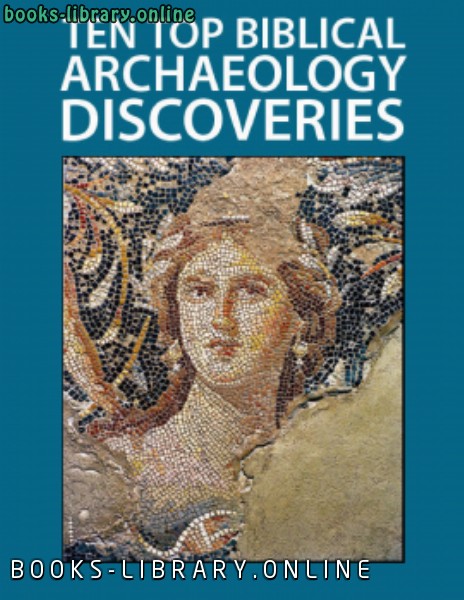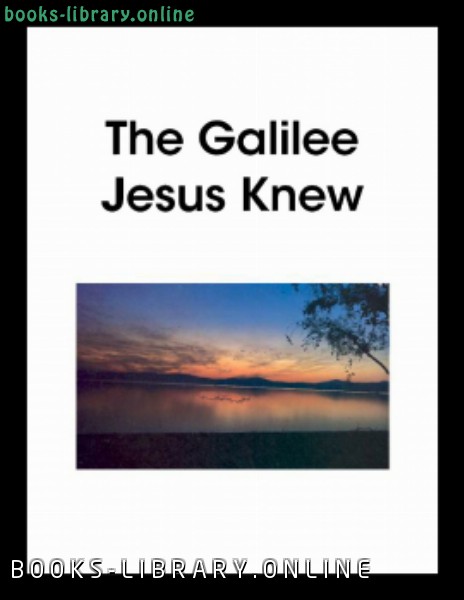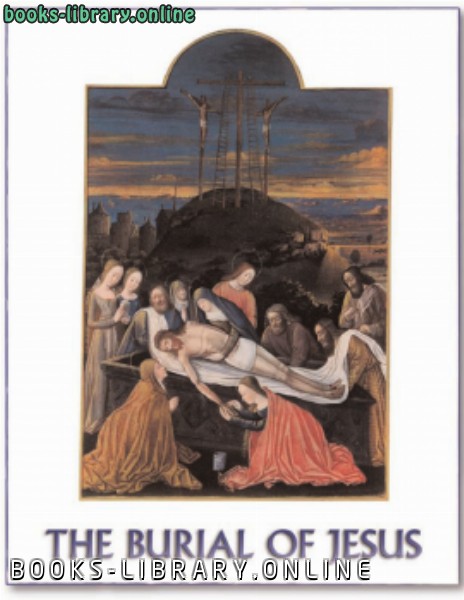📘 ❞ Islam in the Ancient World ❝ كتاب ــ Biblical Archaeology Society اصدار 2014
كتب اسلامية باللغة الانجليزية - 📖 كتاب ❞ Islam in the Ancient World ❝ ــ Biblical Archaeology Society 📖
█ _ Biblical Archaeology Society 2014 حصريا كتاب ❞ Islam in the Ancient World ❝ 2024 World: Many of ancient places, people and events that populate history are also a part Islamic tradition explores some Islam’s significant sites, bringing new perspective to traditions Discover how construction glimmering Dome Rock impressive Al Aqsa Mosque sought both draw on earlier religious outshine pre existing monuments Jerusalem “Islam Temple Mount” by Moshe Sharon J Harold Ellens describes important cultural exchange came about from remarkable book “The Fihrist: How An Arab Bookseller Saved Civilization ” In “Abraham’s Sons: Bible Qur’an See Same Story Differently,” John Kaltner storytelling similarities divergences, revealing what is distinctive while shedding unexpected light text Julie Skurdenis Saudi Arabia’s most archaeological sites like Domat Jandal Qasr Marid “Desert Fortresses: Jouf, Arabia ” The Golden Age traditionally dated mid 7th century 13th at which Muslim rulers established one largest empires During this period, artists, engineers, scholars, poets, philosophers, geographers traders world contributed agriculture, arts, economics, industry, law, literature,navigation, philosophy, sciences, sociology, technology, preserving adding inventions innovations their own Also time became major intellectual centre for science, medicine education In Baghdad they “House Wisdom“, where non Muslim, gather translate world’s knowledge into Arabic Translation Movement Many classic works antiquity would otherwise have been forgotten were translated later turn Turkish, Sindhi, Persian, Hebrew Latin Knowledge was synthesized originating ancientMesopotamia, Rome, China, India, Persia, Egypt, North Africa, Greece Byzantine civilizations Rival dynasties such as Fatimids Egypt Umayyads al Andalus centres with cities Cairo Córdoba rivaling The empire first “truly universal civilization,” brought together “peoples diverse Chinese, Indians, Middle East black Africans, white Europeans ”A innovation period paper – originally secret tightly guarded Chinese art papermaking obtained prisoners taken Battle Talas (751), spreading Samarkand Arabs improved upon techniques using mulberry bark starch account preference pens vs brushes By AD 900 there hundreds shops employing scribes binders books public libraries began become From here making spread west Morocco then Spain Europe Much learning development can be linked topography Even prior presence, city Mecca served center trade pilgrimage exchanging ideas goods influence held merchants over African Arabian Asian routes tremendous As result, civilization grew expanded basis its merchant economy, contrast Christian, Indian peers who built societies an agricultural landholding nobility Merchants faith South east Asia, kingdoms Western Africa returned used wealth invest textiles plantations Aside traders, Sufi missionaries played large role Islam, message various regions around principal locations included:Persia, Mesopotamia, Central Asia Although, mystics had parts Eastern Anatolia (Turkey), Asia,East Islamic ethics Many medieval thinkers pursued humanistic, rational scientific discourses search knowledge, meaning values A wide range writings love, poetry, philosophical theology show thought open humanistic individualism, occasional secularism, skepticism liberalism Religious freedom, though society still controlled under values, helped create cross networks attracting Christian Jewish intellectuals thereby spawn greatest creativity Ages 8th centuries Another reason flourished during early emphasis freedom speech, summarized Hashimi (a cousin Caliph Ma’mun) following letter opponents he attempting toconvert through reason: “Bring forward all arguments you wish say whatever please speak your mind freely Now safe free appoint arbitrator will impartially judge between us lean only towards truth empary passion, shall Reason, whereby God makes responsible our rewards punishments Herein I dealt justly given full security am ready accept decision Reason may give me or against For “There no compulsion religion” (Qur’an 2:256) invited willingly accord pointed out hideousness present belief Peace blessings God!” Early proto environmentalist treatises written Kindi, Razi, Ibn Jazzar, Tamimi, Masihi, Avicenna, Ali ibn Ridwan, Abd el latif, Nafis Their covered number subjects related pollution air pollution, water soil contamination, municipal solid waste mishandling Cordoba, containers disposal facilities litter collection Institutions A educational institutions previously unknown origins world, notable examples being: hospital (which replaced healing temples sleep temples) psychiatric hospital, library lending library, academic degree granting university, astronomical observatory research institute opposed private observation post case times) The universities issued diplomas Bimaristan medical university hospitals students qualified practicing doctors 9th Guinness Book Records recognizes University Karaouine Fez, oldest founding 859 CE Azhar University, founded Cairo, 975 CE, offered variety degrees, including postgraduate often considered fledged doctorate dates back ijazat attadris wa ‘l ifttd (“license teach issue legal opinions”) Madrasahs taught law Tripoli said many three million before it destroyed Crusaders original mathematical sciences far exceeds combined total Greek comparable significance, although small fraction surviving studied modern times “The results scholars’ literary activities reflected enormous amount (about hundred thousand) manuscripts (not less than 5 million) current… These figures so imposing printed epoch presents materials” A distinct features introduced not libraries, but instruction ideas, place meetings discussions, sometimes lodging scholars boarding school pupils concept catalogue organized specific genres categories Legal include trust charitable (Waqf), agency aval (Hawala), lawsuit peer review كتب اسلامية باللغة الانجليزية مجاناً PDF اونلاين holy texts Muslims believe authored via prophets throughout humanity's All these books, belief, promulgated code laws ordained those

Many of the ancient places, people and events that populate Biblical history are also a part of the Islamic tradition. Islam in the Ancient World explores some of Islam’s significant history and sites, bringing a new perspective to Biblical history and traditions.
Discover how the construction of the glimmering Dome of the Rock and the impressive Al-Aqsa Mosque sought both to draw on earlier religious traditions and to outshine the pre-existing monuments of Jerusalem in “Islam on the Temple Mount” by Moshe Sharon.
J. Harold Ellens describes the important cultural exchange that came about from a remarkable book in “The Fihrist: How An Arab Bookseller Saved Civilization.”
In “Abraham’s Sons: How the Bible and Qur’an See the Same Story Differently,” John Kaltner explores storytelling similarities and divergences, revealing what is distinctive about the Qur’an and Islam while shedding unexpected light on the Biblical text
Julie Skurdenis describes some of Saudi Arabia’s most important ancient archaeological sites like Domat Al-Jandal and Qasr Marid in “Desert Fortresses: Al-Jouf, Saudi Arabia.”
The Islamic Golden Age is traditionally dated from the mid-7th century to the mid-13th century at which Muslim rulers established one of the largest empires in history.
During this period, artists, engineers, scholars, poets, philosophers, geographers and traders in the Islamic world contributed to agriculture, the arts, economics, industry, law, literature,navigation, philosophy, sciences, sociology, and technology, both by preserving earlier traditions and by adding inventions and innovations of their own. Also at that time the Muslim world became a major intellectual centre for science, philosophy, medicine and education. In Baghdad they established the “House of Wisdom“, where scholars, both Muslim and non-Muslim, sought to gather and translate the world’s knowledge into Arabic in the Translation Movement. Many classic works of antiquity that would otherwise have been forgotten were translated into Arabic and later in turn translated into Turkish, Sindhi, Persian, Hebrew and Latin. Knowledge was synthesized from works originating in ancientMesopotamia, Ancient Rome, China, India, Persia, Ancient Egypt, North Africa, Ancient Greece and Byzantine civilizations. Rival Muslim dynasties such as the Fatimids of Egypt and the Umayyads of al-Andalus were also major intellectual centres with cities such as Cairo and Córdoba rivaling Baghdad. The Islamic empire was the first “truly universal civilization,” which brought together for the first time “peoples as diverse as the Chinese, the Indians, the people of the Middle East and North Africa, black Africans, and white Europeans.”A major innovation of this period was paper – originally a secret tightly guarded by the Chinese. The art of papermaking was obtained from prisoners taken at the Battle of Talas (751), spreading to the Islamic cities of Samarkand and Baghdad. The Arabs improved upon the Chinese techniques of using mulberry bark by using starch to account for the Muslim preference for pens vs. the Chinese for brushes. By AD 900 there were hundreds of shops employing scribes and binders for books in Baghdad and public libraries began to become established. From here paper-making spread west to Morocco and then to Spain and from there to Europe in the 13th century.
Much of this learning and development can be linked to topography. Even prior to Islam’s presence, the city of Mecca served as a center of trade in Arabia. The tradition of the pilgrimage to Mecca became a center for exchanging ideas and goods. The influence held by Muslim merchants over African-Arabian and Arabian-Asian trade routes was tremendous. As a result, Islamic civilization grew and expanded on the basis of its merchant economy, in contrast to their Christian, Indian and Chinese peers who built societies from an agricultural landholding nobility. Merchants brought goods and their faith to China, India, South-east Asia, and the kingdoms of Western Africa and returned with new inventions. Merchants used their wealth to invest in textiles and plantations.
Aside from traders, Sufi missionaries also played a large role in the spread of Islam, by bringing their message to various regions around the world. The principal locations included:Persia, Ancient Mesopotamia, Central Asia and North Africa. Although, the mystics also had a significant influence in parts of Eastern Africa, Ancient Anatolia (Turkey), South Asia,East Asia and South-east Asia.
Islamic ethics
Many medieval Muslim thinkers pursued humanistic, rational and scientific discourses in their search for knowledge, meaning and values. A wide range of Islamic writings on love, poetry, history and philosophical theology show that medieval Islamic thought was open to the humanistic ideas of individualism, occasional secularism, skepticism and liberalism.
Religious freedom, though society was still controlled under Islamic values, helped create cross-cultural networks by attracting Muslim, Christian and Jewish intellectuals and thereby helped spawn the greatest period of philosophical creativity in the Middle Ages from the 8th to 13th centuries. Another reason the Islamic world flourished during this period was an early emphasis on freedom of speech, as summarized by al-Hashimi (a cousin of Caliph al-Ma’mun) in the following letter to one of the religious opponents he was attempting toconvert through reason:
“Bring forward all the arguments you wish and say whatever you please and speak your mind freely. Now that you are safe and free to say whatever you please appoint some arbitrator who will impartially judge between us and lean only towards the truth and be free from the empary of passion, and that arbitrator shall be Reason, whereby God makes us responsible for our own rewards and punishments. Herein I have dealt justly with you and have given you full security and am ready to accept whatever decision Reason may give for me or against me. For “There is no compulsion in religion” (Qur’an 2:256) and I have only invited you to accept our faith willingly and of your own accord and have pointed out the hideousness of your present belief. Peace be upon you and the blessings of God!”
Early proto-environmentalist treatises were written in Arabic by al-Kindi, al-Razi, Ibn Al-Jazzar, al-Tamimi, al-Masihi, Avicenna, Ali ibn Ridwan, Abd-el-latif, and Ibn al-Nafis. Their works covered a number of subjects related to pollution such as air pollution, water pollution, soil contamination, and municipal solid waste mishandling. Cordoba, al-Andalus also had the first waste containers and waste disposal facilities for litter collection.
Institutions
A number of important educational and scientific institutions previously unknown in the ancient world have their origins in the early Islamic world, with the most notable examples being: the public hospital (which replaced healing temples and sleep temples) and psychiatric hospital, the public library and lending library, the academic degree-granting university, and the astronomical observatory as a research institute as opposed to a private observation post as was the case in ancient times).
The first universities which issued diplomas were the Bimaristan medical university-hospitals of the medieval Islamic world, where medical diplomas were issued to students of Islamic medicine who were qualified to be practicing doctors of medicine from the 9th century. The Guinness Book of World Records recognizes the University of Al Karaouine in Fez, Morocco as the oldest degree-granting university in the world with its founding in 859 CE. Al-Azhar University, founded in Cairo, Egypt in the 975 CE, offered a variety of academic degrees, including postgraduate degrees, and is often considered the first full-fledged university. The origins of the doctorate also dates back to the ijazat attadris wa ‘l-ifttd (“license to teach and issue legal opinions”) in the medieval Madrasahs which taught Islamic law.
The library of Tripoli is said to have had as many as three million books before it was destroyed by Crusaders. The number of important and original medieval Arabic works on the mathematical sciences far exceeds the combined total of medieval Latin and Greek works of comparable significance, although only a small fraction of the surviving Arabic scientific works have been studied in modern times.
“The results of the Arab scholars’ literary activities are reflected in the enormous amount of works (about some hundred thousand) and manuscripts (not less than 5 million) which were current… These figures are so imposing that only the printed epoch presents comparable materials”
A number of distinct features of the modern library were introduced in the Islamic world, where libraries not only served as a collection of manuscripts as was the case in ancient libraries, but also as a public library and lending library, a centre for the instruction and spread of sciences and ideas, a place for meetings and discussions, and sometimes as a lodging for scholars or boarding school for pupils. The concept of the library catalogue was also introduced in medieval Islamic libraries, where books were organized into specific genres and categories.
Legal institutions introduced in Islamic law include the trust and charitable trust (Waqf), the agency and aval (Hawala), and the lawsuit and medical peer review.
#17K
1 مشاهدة هذا اليوم#38K
24 مشاهدة هذا الشهر#16K
13K إجمالي المشاهدات









